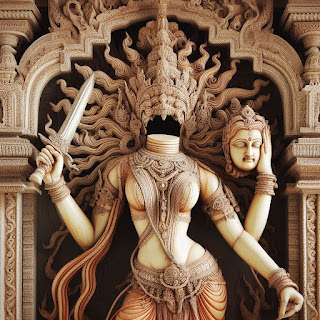A Gnostic Glossary
Here's a start to the glossary that will accompany my book, The Mystic's Key. Do you have other Gnostic terms you'd like to see glossarized? If so, leave it in the comments. Thanks!
Aeons: Divine beings or emanations from the supreme God in Gnostic cosmology.
Archons: Rulers or authorities in the material world, often seen as forces of spiritual ignorance and limitation.
Cainites: A Gnostic sect named after Cain, the biblical figure. The Cainites revered Cain as a positive figure who rebelled against the Demiurge and embraced the knowledge of the forbidden fruit. They rejected the authority of the Old Testament God.
Cathar: The Cathars were members of a Christian dualistic sect that flourished in the 12th and 13th centuries in the region of Languedoc in southern France. They believed in a radical dualism, viewing the material world as inherently evil and the spiritual realm as good. Cathars rejected the authority of the Catholic Church, emphasizing asceticism, the pursuit of spiritual purity, and the belief in a transcendent God.
Christ: In Gnostic belief, Christ is a divine figure who emanates from the Pleroma to provide knowledge and salvation to humanity. Christ is seen as the revealer of gnosis and the liberator of the divine sparks trapped within human beings, helping them return to their divine origin.
Demiurge: A lesser deity or creator responsible for the material world, often viewed negatively in Gnosticism.
Docetism: A belief system that holds that Jesus only appeared to have a physical body, but was actually a purely divine being.
Emanation: The process by which the divine beings or Aeons emerge from the ultimate God.
Gnosis: Direct, experiential knowledge of the divine, often contrasted with mere intellectual or faith-based understanding.
Gnostic Dualism: The belief in a fundamental duality between a transcendent spiritual realm and a flawed material world.
Hypostasis: The underlying reality or essence of a being or entity, often used to describe the nature of the Aeons.
John the Baptist: John the Baptist was a significant figure in Christianity and is also revered in other religious traditions, including Gnosticism. He is known for his role as a prophet and for baptizing Jesus in the River Jordan. In Gnostic traditions, John the Baptist is often seen as an important spiritual figure who introduced the concept of baptism as a ritual of purification and initiation into higher spiritual knowledge.
Kenoma: In Gnosticism, the term "kenoma" refers to the lower realm or the material world, which is considered to be a flawed or imperfect creation of the Demiurge. It is often contrasted with the divine, spiritual realm known as the Pleroma.
Logos: The term "Logos" has different meanings in various Gnostic traditions. Generally, it refers to the divine principle or word through which the supreme God or the Pleroma manifests itself. The Logos is often associated with wisdom, creation, and the divine mediator between the spiritual and material realms.
Mandean: The Mandaeans are an ancient Gnostic sect that traces its roots back to the first century CE. They follow the teachings of John the Baptist and consider him their primary prophet. Mandean theology centers on the idea of the material world being the result of a cosmic error and the existence of numerous divine beings and archons. Ritual purification and the pursuit of gnosis are important aspects of Mandean religious practice.
Nag Hammadi Library: A collection of Gnostic texts discovered in 1945 near Nag Hammadi, Egypt, providing valuable insights into Gnostic thought.
Ogdoad: A group of eight divine beings or Aeons, representing various aspects of the divine.
Ophites: A Gnostic sect that revered the serpent from the Garden of Eden as a symbol of wisdom and enlightenment. They believed that the serpent imparted true knowledge to Adam and Eve, contrary to the Demiurge's prohibition.
Pleroma: The divine, spiritual realm in Gnostic cosmology, often depicted as a fullness or perfection.
Sophia: The Aeon of wisdom and the lowest Aeon in the Pleroma, associated with the fall of humanity and the redemption of the material world.
Sethianism: A Gnostic tradition named after Seth, the third son of Adam and Eve, which emphasizes the importance of gnosis and the role of Seth as a savior figure.
Trimorphic Protennoia: A Gnostic text found in the Nag Hammadi Library. It describes the divine figure of Protennoia (First Thought) as having three forms or aspects, representing the feminine, masculine, and androgynous aspects of the divine.
Valentinianism: A Gnostic tradition attributed to the teacher Valentinus, which teaches a complex cosmology and emphasizes the role of Jesus as a divine revealer.
World Soul: The collective soul of humanity, often seen as trapped or imprisoned within the material world.




Comments
Post a Comment